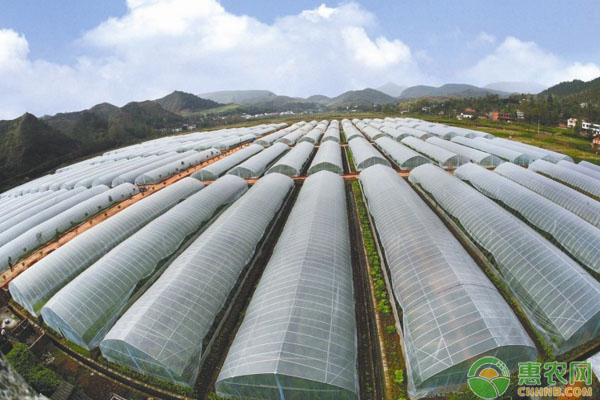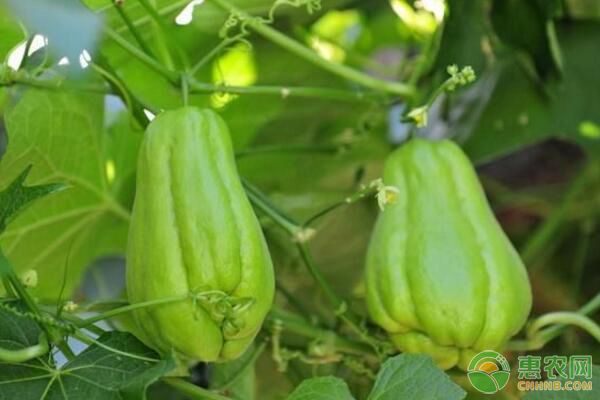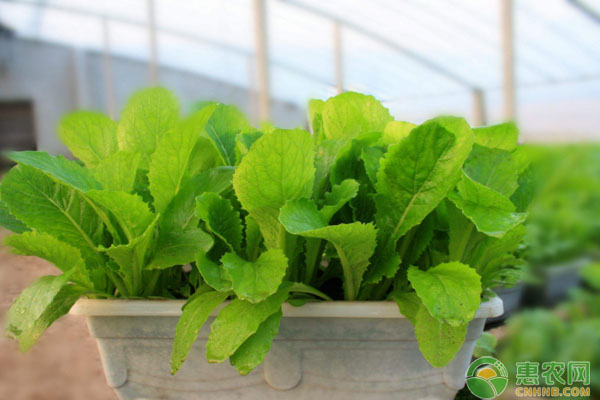Nowadays, the greenhouse vegetable industry has developed rapidly as a major source of off-season vegetables, but there are also some problems in the development process, such as common pests and diseases, which not only affect the healthy growth of vegetables, but also affect the economic interests of growers. It is especially important to study effective prevention measures. Today, the small series of Huinong.com talks about the characteristics and prevention and control of diseases and insect pests in greenhouses. I hope that everyone can help. 1 Occurrence characteristics of vegetable pests and diseases in greenhouse 1.1 There are many types of pests and diseases There are problems such as high humidity, weak light, poor ventilation, single cultivar, serious soil salinization and high concentration of harmful gases in the greenhouse. This is very beneficial to the propagation of germs and pests, and the variety of pests and diseases is very diverse. At the same time, the common pests and diseases of different vegetables also have great differences. For example, common diseases and insect pests of cucumber include black star disease, downy mildew, sclerotinia, greenhouse whitefly, etc., while common pests and diseases of tomato have late blight, gray mold, and cockroaches. Diseases, sassafras, etc., which also bring greater difficulty to the pest control work of greenhouse vegetables. 1.2 Fast propagation speed In general, crop diseases are caused by pathogenic bacteria, and the environment with poor air circulation, high humidity, poor illumination and suitable temperature in the greenhouse creates very good conditions for the growth process of pathogenic spores, and the infection rate of germs is greatly accelerated. It is easy to spread into disasters, which is also the main reason for the rapid spread of vegetable diseases in greenhouses. In terms of pests, because the greenhouse is a closed environment, the environment with suitable temperature and humidity is very suitable for the hatching of many eggs, which creates favorable conditions for pest reproduction. 1.3 The law of occurrence is complicated The wintering period of greenhouse vegetables is usually short, and the seedling cultivation and cultivation work of vegetables is in a continuous state all year round. This means that the pests and insects will exist year after year, and many pests and diseases that should have been dormant in winter will continue to breed. In addition, the vegetable pests in the greenhouse are shortened during winter or no wintering period, which makes the first infestation and the number of reinfections and the number of pests in the greenhouse vegetable pests and diseases are high, and the occurrence of pests and diseases is naturally very complicated. 2 Agricultural control techniques for pests and diseases of vegetables in greenhouses 2.1 Breeding of improved varieties The environment inside the greenhouse has the common characteristics of high humidity, weak light and large temperature difference. Therefore, when selecting vegetable varieties, it is necessary to select varieties with low light resistance, moisture resistance and temperature adaptability, and also pay attention to strong seedlings. Breeding, avoiding seedlings mixed in the nursery, disinfecting the seedling substrate, selecting seeds without pests and diseases, high germination rate, strengthening the fertilizer and water management in the seedling stage, and timely controlling the pests and diseases, thereby cultivating the seedlings, Miaoquan, Miaoyun, Miaozhuang vegetable seedlings. 2.2 Soil disinfection Before planting vegetables, according to the common pests and diseases of greenhouse vegetables, select some insecticides or bactericidal agents and mix them with appropriate amount of fine soil, then spread them on the surface and plow them into the soil to achieve the effect of soil insecticide. However, it is necessary to pay attention to these points during the disinfection process: it is necessary to clarify the common diseases so as not to affect the effect of soil disinfection; try to combine the disease and regularity of specific common diseases, select the best disinfection timing and dosage; pay attention to keep the surface of the bed surface moist. In order to avoid the disease caused by the inability of the drug to be exerted; from the perspective of long-term planting, adhere to the alternate use of different types of drugs, to avoid the continued use of the same agent to make the pest or pathogen resistant. 2.3 Cultivation Management After insisting on the rotation of crops and pests, remove the diseased and diseased fruits in time, and destroy or deep bury them to reduce the number of diseases; after the hoes are ploughed, fully clean the greenhouses, try to remove germs and pests, and ensure the greenhouse Organic fertilizer is added during the growth of vegetables, and formula fertilization is adopted to meet the specific nutrient requirements of various vegetables. 2.4 mulching film coverage Among the common pests and diseases of greenhouse vegetables, soil-borne diseases are characterized by difficult control and rapid spread. Therefore, high-ridge mulching cultivation methods can be selected for such diseases, and they are close to the surface immediately after the completion of soil preparation and weeding. Covering the plastic film and pressing the soil while covering the film, this can avoid the vegetable roots and stems in the water for a long time during irrigation, reduce the air humidity in the greenhouse and the incidence of soil-borne vegetable diseases, and can also improve the ground temperature. Promote the growth of plants. 2.5 Grafting technology Vegetable grafting technology can not only improve the yield of vegetables, but also have a good effect in the prevention and control of pests and diseases. For example, when vegetables have symptoms such as verticillium wilt and root rot, the rootstock can be used to complete the grafting of vegetables, which can replace the diseased roots of vegetables and greatly improve the disease resistance of vegetable plants. 3 Other prevention and control techniques for vegetable pests and diseases in greenhouses 3.1 Phytosanitary Phytosanitary can be divided into external quarantine and internal quarantine. Phytosanitary can not only achieve effective control of the spread and spread of pests and diseases, but also avoid international pests and diseases from entering the country. It is of great significance for the prevention and control of pests and diseases in greenhouse vegetables. 3.2 Physical control The time, the type of disease, and even the effects and methods of physical control are different, so it is necessary to choose according to the actual situation. In the summer and autumn seasons, high-temperature sheds can be used to kill germs, eggs, and nematodes on the soil surface and walls. Choose yellow boards or light traps, set up insect nets and other methods to control pests. 3.3 Ecological control Ecological control can be divided into two methods of using natural enemies and biological pesticides, mainly for vegetable pests. The use of natural enemies is actually to release natural enemies in the greenhouse, to control insects. In addition, the prevention and control of biological pesticides is the use of non-chemical agents such as Bacillus thuringiensis, Beauveria bassiana, Acartobacter, and insect virus preparations to control various pests such as whitehouse whitefly. 3.4 Chemical control Chemical control is mainly the use of chemical agents. In the use of chemical control, the principle of rational drug use and scientific drug use should be adhered to. At the same time, continuous drug use and excessive drug use should be avoided. High-efficiency devices should be selected to reduce the drug dosage and enhance the drug control effect. . Solar Camera,Wireless Solar Outdoor Monitoring,Night Vision Solar Camera,Solar Security Camera Shenzhen Zuomi Technology Co., Ltd. , https://www.nbbkvis.com


Occurrence characteristics and control points of diseases and insect pests in greenhouse vegetables